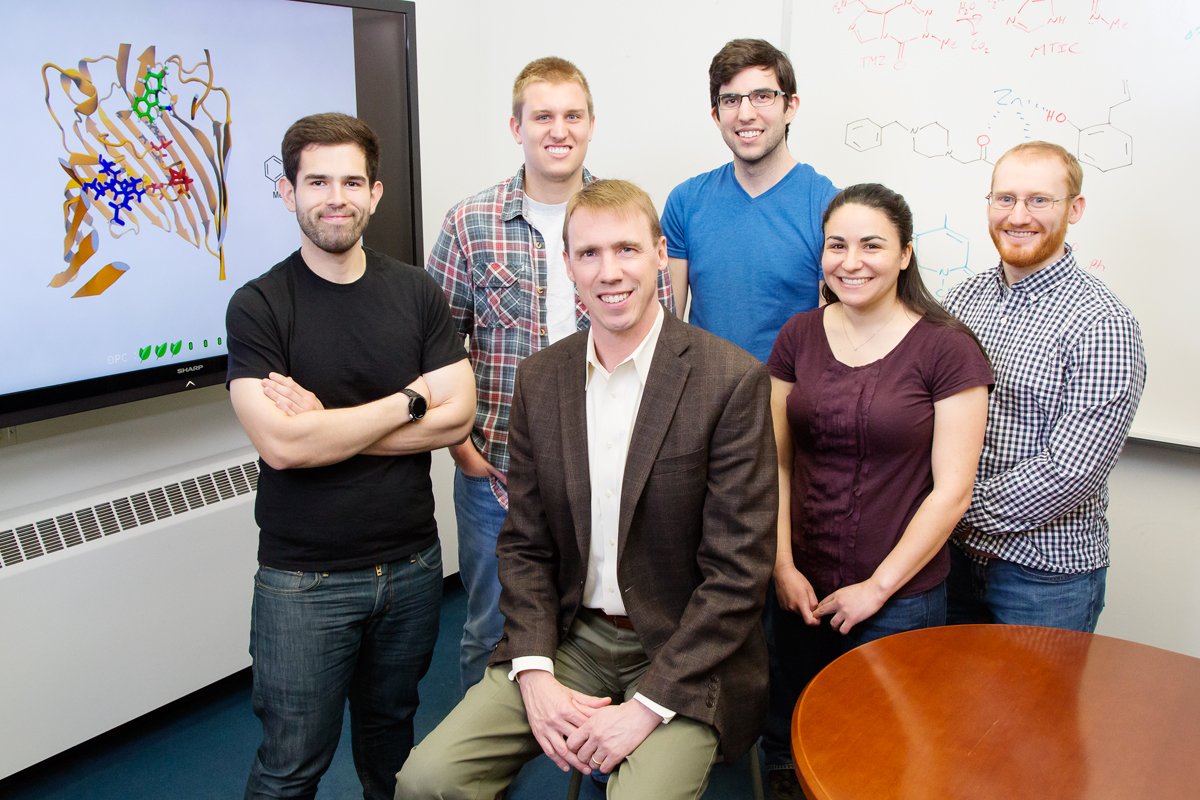
Photo by L. Brian Stauffer
Scientists report that they now know how to build a molecular Trojan horse that can penetrate
Led by University of Illinois chemistry professor Paul Hergenrother, the scientists tested their approach by modifying a drug that kills only
The effort to find new antibiotics to combat these pathogens has failed again and again simply because almost all new drugs are unable to penetrate the
«We have a handful of classes of antibiotics that work against
The void of new antibiotics is not due to lack of effort. In 2007, for example, a large pharmaceutical company screened roughly 500,000 synthetic compounds for activity against E. coli, none of which led to a new drug, the researchers wrote.
«These microbes have an outer membrane that is basically impermeable to antibiotics or
Rather than using commercial chemical libraries, Hergenrother’s group turned to its own collection of complex molecules. These were the natural products of plants and microbes that the scientists had modified in the lab.
«A few years ago, we found that through a series of organic chemistry steps we could change natural products into molecules that look very different from the parent compounds," Hergenrother said. The new molecules were more diverse than most available commercially, he said. The team has produced more than 600 new compounds using this approach.
The researchers tested these compounds individually against
«The few that got in all had amines on them, so we started building out from there," Hergenrother said. Amines are molecular components that contain the element nitrogen.
The researchers tested more compounds with amines, and their success rate increased. But this was not the only trait needed to break into the
«Having an amine was necessary but not sufficient," Hergenrother said.
Using a computational approach, the team discovered three key traits required for access: To get in, a compound must have an amine that is not hindered by other molecular components; it must be fairly rigid (floppy compounds are more likely to get stuck in the porin gateway), and it must have «low globularity," which, more simply, means it must be flat, not fat.
To test these guidelines, the team added an amine group to deoxynybomycin, a compound created in the 1960s by Kenneth Rinehart Jr., at the time a chemistry professor at the U. of I. They chose this compound because it is a potent killer of
By adding an amine to the right place on the molecule, the researchers converted DNM into a
«The point is not necessarily this compound, which may or may not be a good candidate as a drug used in human health," Hergenrother said. «It’s more important as a demonstration that we understand the fundamentals at play here. Now, we know how to make collections of compounds where everything gets in.»
Finding compounds that penetrate the membrane is important, but antibiotics also must kill the bacteria. Previous research suggests that only about one in 200 random compounds that penetrate
«These are workable odds," he said. «Much better than zero in 500,000.»
Hergenrother is an affiliate of the Carl R. Woese Institute for Genomic Biology at Illinois. The U. of I. funded this research, in part through the Office of Technology Management. The National Science Foundation and National Institutes of Health also supported the work.


